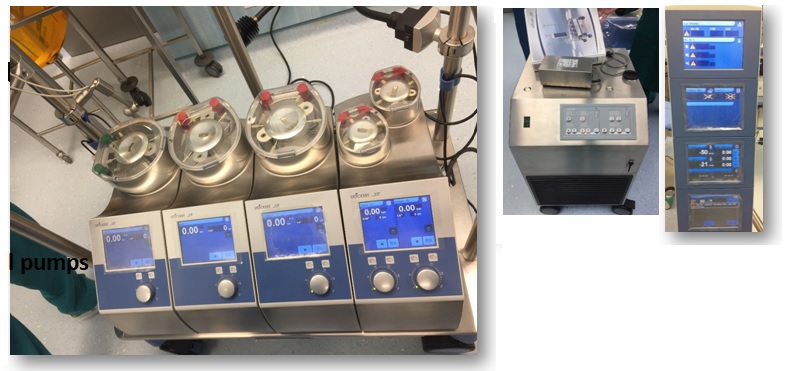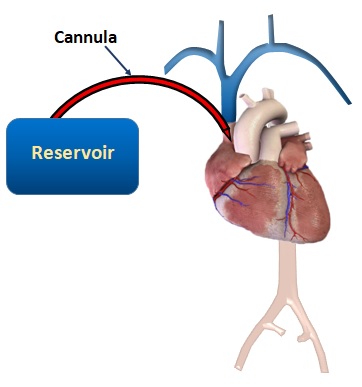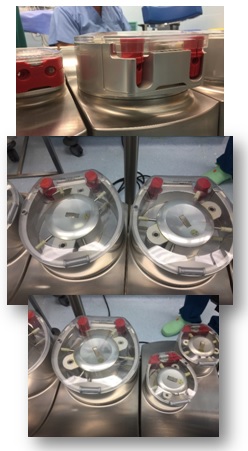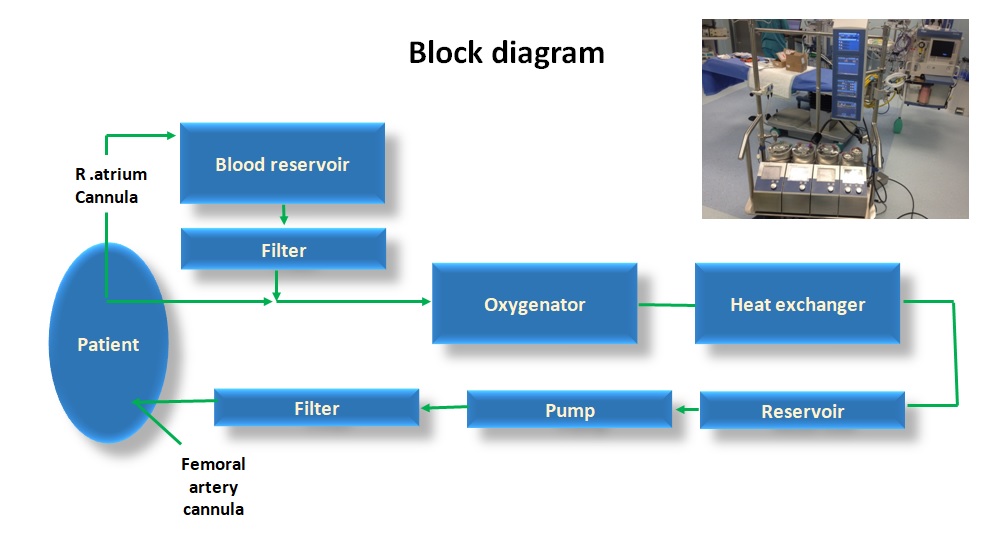Heart-Lung Machine
Introduction
- For open heart surgery (different types of cardiac bypass surgery to repair their faulty hearts or blood vessels) the heart must be temporarily stopped from beating because the doctors actually open up the patients chest cavity, expose the heart, and operate on it.
- If it stops beating, oxygen-carrying blood cannot be circulated through the body, and a person will die shortly afterward.
- The heart-lung machine is a device that is connected to the blood vessels and serves as the persons heart and lungs for a period of time.
- In other words, the patients blood bypasses the heart to enter the machine instead, where it is oxygenated just as it would be in the lungs.
- From there, the machine pumps the blood out into the rest of the body.
System Component
- Cannula
- Reservoir
- Roller/centrifugal pumps
- Heat exchanger
- Oxygenator
- Filter

Venous Cannulas
- The surgeon first connects the bypass machine to the patient by inserting tubes called the venous cannulas into the vena cava (the large blood vessels leading to the heart).
- This redirects the blood flow into the heart-lung machine, bypassing the heart completely.
- The tubes could be in varying sizes and resistances. (a precise and controlled amount of blood will flow through them)
Venous Reservoir
- From the cannulas, the blood flows into the venous reservoir, a chamber made of plastic or polyvinyl chloride (PVC) that collects and stores the blood from the patients body.
- It must have a large volume capacity to accommodate a large volume of blood.

Roller pumps or centrifugal pumps
- Blood next travels from the venous reservoir into the heart-lung machines pump, which utilizes compression force or centrifugal force to drive blood flow.
- There are two types of pumps: roller pumps or centrifugal pumps.
- In a roller pump, the blood enters a curved track of tubing made of a flexible material, often PVC, latex, or silicone. As the blood enters, two cylindrical rollers rotate and slide forward, constricting the tubing. Just as squeezing a tube of toothpaste pushes the paste forward and out of the tube.
- The centrifugal pump is comprised of a plastic wheel that rotates rapidly, propelling the liquid away from the center of rotation.

Heat Exchanger
- Blood flows from the pump into the heat exchanger, which uses the concept of heat transfer to cool the blood down to the optimal temperature for surgery.
- The human body normally maintains an internal temperature of 37 degrees Celsius but during cardiac surgery, physicians lower the patient’s core temperature to a state of moderate hypothermia or 5 to 10 degrees lower than usual.
- Oxygen gas is more soluable in cold blood than in warm blood. Thus, lowering the temperature maximizes the amount of oxygen the patients blood cells can carry.
Oxygenator
- From the heat exchanger, the cooled blood enters the oxygenator, where it is imbued with oxygen. Todays heart-lung machines use an oxygenator that attempts to mimic the lung itself.
- Types of oxygenator:
- Membrane Oxygenator
- Bubble Oxygenator
Membrane Oxygenators
- Membrane oxygenators imitate the natural lung by a thin membrane of either micro porous polypropylene or silicone rubber between the gas and blood phases.
- Oxygen enters one end of the bundles are potted at each end to separate the blood and gas compartments. Oxygen and carbon dioxide diffuse in opposite directions across the aggregate large surface of the hollow fibers.
Bubble Oxygenators
- In bubble oxygenators, venous blood drains directly into a chamber into which oxygen is infused through a diffusion plate. The diffusion plate produces thousands of small oxygen bubbles within blood.
- Gas exchange occurs across a thin film at blood gas interface around each bubble. Carbon dioxide diffuses into the bubble and oxygen diffuses outward into blood.
Filter
- The filters used in the heart-lung machine are comprised of nylon or polyester thread woven into a screen with small pores.
- The small pores trap the harmful bubbles or particles, allowing purer blood, free from dangerous embolism-causing particles, to flow through.
